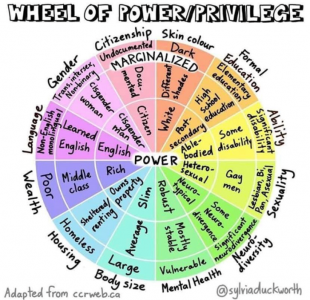
At UBC we believe excellence cannot be achieved without inclusion. But how we are included is shaped by how we present ourselves, the ways we are seen by others, the systems and norms of our campus, and how they all intersect. For the VPFO to meet our objectives around operational excellence, we each need to develop our understanding of people’s unique experiences, opportunities, and barriers.
What is intersectionality?
Kimberlé Crenshaw, an American civil rights advocate and professor at UCLA School of Law and Columbia Law School, talks about intersectional theory
Kimberlé Crenshaw is an American civil rights advocate and professor at both the UCLA School of Law and Columbia Law School. Kimberlé has created a way to think about our identities and how we experience the world called intersectionality.
Intersectionality is a framework that describes how our overlapping social identities relate to social structures of racism and oppression. Intersectionality merges many identity markers, including race, class, gender, sexual orientation, age, ethnicity, religion, disability, and more, to create a more truthful and complex identity.
For example, a queer black woman may experience the world on the basis of her sexuality, gender, and race — a unique experience based on how those identities intersect in her life.
Why is it important?
Intersectionality is directly tied to oppression. Oppression is the force that allows, through the power of norms and systems, the unjust treatment or control of people. Intersectionality shows us that social identities work on multiple levels, resulting in unique experiences, opportunities, and barriers for each person. Therefore, oppression cannot be reduced to only one part of an identity; each oppression is dependent on and shapes the other.
Understanding intersectionality is essential to combatting the interwoven prejudices people face in their daily lives.
What can I do?
By reflecting on our own identities, their intersections, and practice being mindful we can become better allies for marginalized groups or better able to articulate our own experience.
This wheel diagram, the Wheel of Power/Privilege, is a simplified way to reflect on the many intersecting identities and power structures that we all engage with. Consider how your social identities play into your privilege. What areas sound like you? What types of privilege aren’t on the wheel? How are others you work with represented on the wheel?
Learning about intersectionality and how it affects all of us, both in our work and personal lives, allow us to respectfully communicate with peers, and deepens our understanding of the ways in which diversity, equity, and inclusion are relevant to our community.
To learn more about intersectionality, you can watch this TEDx talk by Kimberlé Crenshaw or read this Intersectionality Report by Ontario Association of Interval & Transition Houses.
